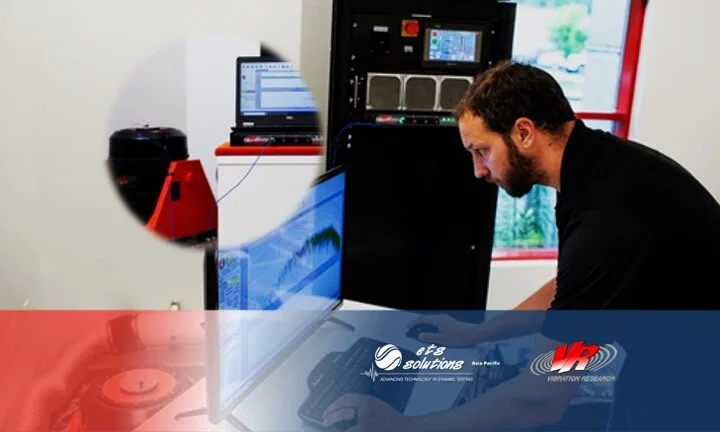Vibration measurement is complex because of its many components: displacement, velocity, acceleration, and frequencies. Vibration measurement is an effective, non-intrusive method to monitor machine condition during start-ups, shutdowns and normal operation. Regular vibration monitoring can detect in a power plant shaft lines, deteriorations and defects of a number of various structural mechanical conditions, for example cracks, bearing faults, coupling damage, imbalance as well as interruptions in the electric grid.
Gas Turbine Vibration Monitoring
Vibration measurements are commonly considered to be a sound indicator of a machine’s overall health state (global monitoring).The general principle behind using vibration data is that when faults start to develop, the system dynamics change, which results in different vibration patterns from those observed at the healthy state of the system monitored.
Vibration Analysis on a conveyor unit
Belt conveyors are an integrated transmission and carrying mechanism with length sometimes extending several thousand meters. In traditional design and analysis of belt conveyors, vibration and impact are usually ignored and only static design is considered. However, to ensure the safety of conveyor operation for this restricted analysis, designers must increase the safety factor, which increases production costs. Many research groups have conducted dynamic analysis of large belt conveyors to reduce production cost and optimize conveyor performance. The conveyor belt was first modeled as an elastic body and then a viscoelastic body to incorporate viscoelastic characteristics of belt cover layer.
Electronic Components Reliability Testing
If your company makes planes, trains, automobiles, medical devices, computers, and communication systems, or you are a large electronic device supplier, the reliability of your products in the field is crucial to your business success. The growing market for electric and hybrid vehicles is increasing the pressure on life-time performance of the devices that power them.
Torsional Vibration Analysis
Torsional vibration measurements allow engineers to better understand the dynamics of their rotating equipment, enabling them to troubleshoot and/or validate performance. With a better understanding of the reasons and methods to measure torsional vibration, the right instrumentation, and a helpful partner, you will become better positioned to make the decisions you need to decrease downtime and increase productivity.
Vibration Analysis
Vibration analysis is the most prevalent method used to monitor the levels and patterns of vibration signals within a component, machinery or structure, in order to detect abnormal vibration events and then using that information to analyse and evaluate the overall condition of the component, machinery or structure. In short, vibration analysis helps you monitor and detect issues using vibration data
Sine Vibration Testing
Sine Vibration Testing may be considered as the most basic vibration testing method used. This type of vibration testing requires less complex parameters compare to other type of vibration testing. Knowing the nature of sinusoidal signal, makes this type of vibration testing easier to understand and to get familiar with. Though, easier to understand does not make it less important compare to other type of vibration testing. Sine vibration testing may still be at the top rank when we are thinking of dynamic characteristic measurement.
MIL-STD-810 Standard - Various types of vibration tests
ETS I Series Vibration Testing System with force rating from 4,000 to 16,000 kgf is ideal for screening of medium sized assemblies with extreme high acceleration test level and high frequency range. The Extreme Acceleration Shaker Y-Ring (EAS-Y Ring) armature is a revolutionary design which will allow for using a proportioned head expander to test multiple specimens simultaneously at extreme high acceleration level.
Vibration Testing for Aerospace Payload_NASA-STD-7002B
National Aeronautics and Space Administration (NASA) is one of the most well-known aerospace agencies in the world. Therefore, NASA standards are also used as reference for testing laboratory to run testing related to component or sub-system of a spacecraft. NASA-STD-7002B is part of NASA standard that provides a standard set of flight hardware test requirements.
Vibration Controller, The Brain of Vibration Testing System
While accelerometer is playing the role of feedback sensor at vibration testing system, then vibration controller can be considered as the "brain" of it. Vibration controller is the device that sending the "instruction" in the form of drive voltage during vibration testing, and also interpreting the feedback signal coming from the accelerometer.
Shortening the Design Process of Vibration Test Fixture by FEM Simulation
When we have a relatively small size and simple shape of UUT, with a simple mounting pattern, simple product orientation and low frequency test range, it will not be so tough to design a good vibration test fixture. But when we start to see one or more of below characteristics, then likely we will find designing vibration test fixture to be very challenging.
















